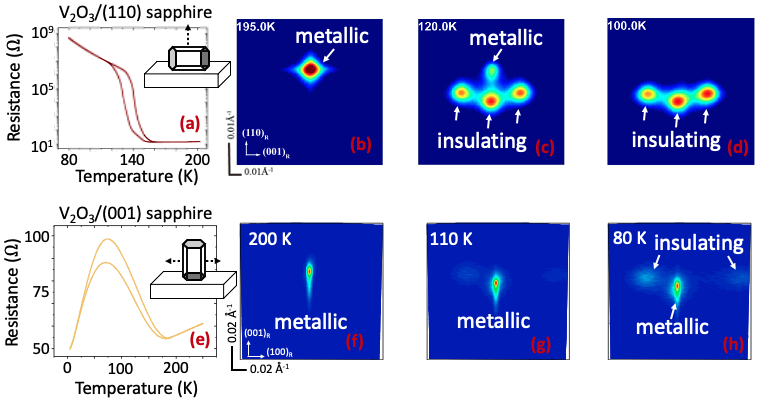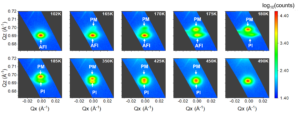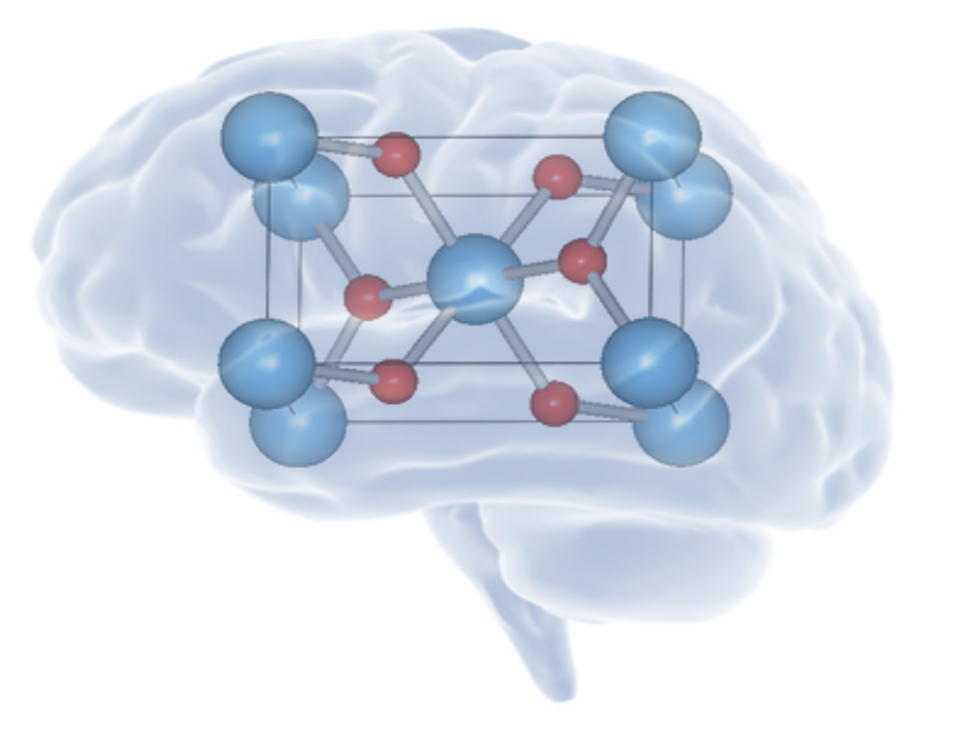
Controlling the trajectory of the insulator-metal phase transition by novel strain engineering – solid state analog of the isochoric water-ice transition
By growing a canonical Mott insulator (V2O3) on sapphire substrates with different orientations we can control the structural transition trajectory leading to huge changes in electronic and structural properties. In (a) we show a normal resistive transition for a V2O3 thin film, along with the corresponding lattice orientation of the film and its expansion direction during the transition. (b-d) reciprocal space maps obtained with x-ray diffractometry corresponding to (a), showing the structural transition from the corundum (metallic) structure to the monoclinic (insulating) structure as the sample is cooled. Conversely, in (e) the structural transition involves an in-plane expansion which is hindered for this lattice orientation due to the limited substrate area. Therefore, the resistive transition is very heavily suppressed (by a factor of >108) accompanied by a highly unusual reentrant metallic behavior at low temperature. Due to structural confinement the metallic phase persists down to very low temperatures (f-h), maintaining metallic percolation with self-induced stress of 2 GPa. This transition is analogous to the isochoric water-ice phase transition where, due to the constant volume, the two phases coexist as the transition progresses along the equilibrium line between the two phases. This self-induced stress allows access to previously inaccessible regions of the phase diagram. The switching properties of devices based on this unusual state of matter are currently being explored.
See Kalcheim et al. – Adv. Funct. Mat. 2005939 (2020) and Phys. Rev. Lett. 122 (5) 057601 (2019).

Stabilization of V2O3‘s paramagnetic insulating (PI) and paramagnetic metallic (PM) phase above room temperature in anisotropically strained thin films. The structures of both phases converge towards the critical point at ~500 K.
Recently we have engineered anisotropic stresses in pure V2O3 thin films which drive this material into regimes which are primarily obtained by Cr-doping. This allows us to stabilize an insulator-to-metal transition around room temperature, marking an important step towards functionalizing V2O3‘s canonical Mott insulator-metal transition for applications. By obtaining films with different degrees of anisotropic strains we were able to decouple the effect of strain in various crystallographic orientations and conclude that the effect of Cr-doping is inequivalent to strain.
See Barazani et al. – Adv. Funct. Mat. 33: 2211801 (2023)
